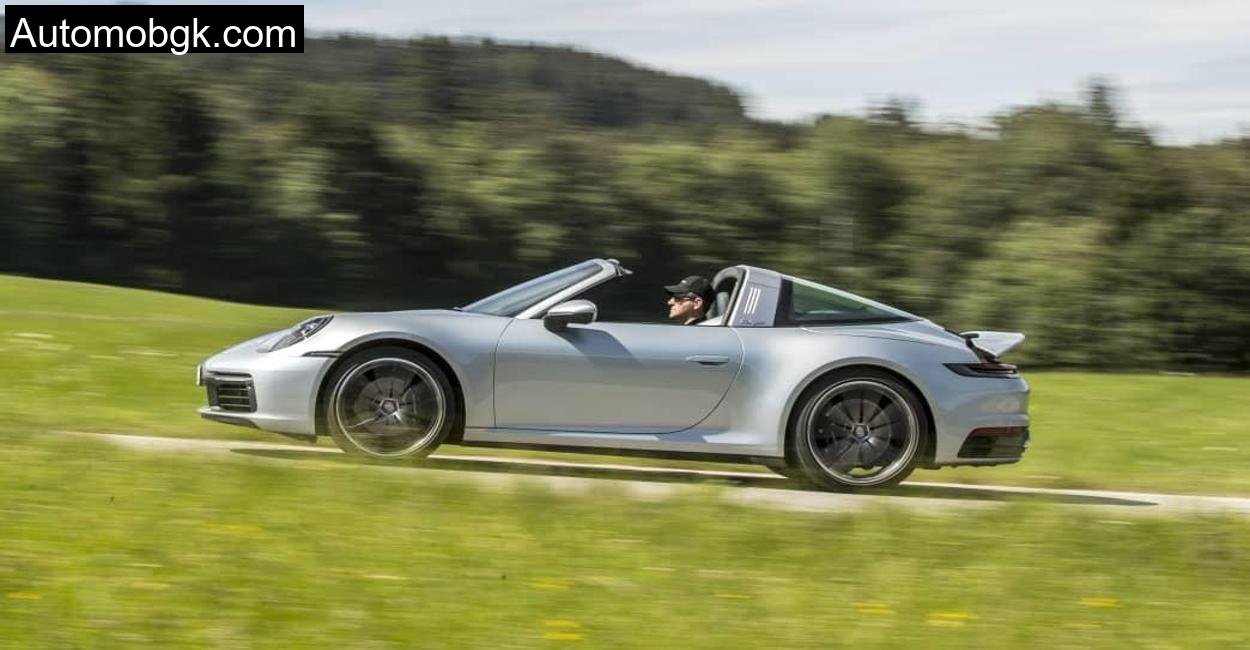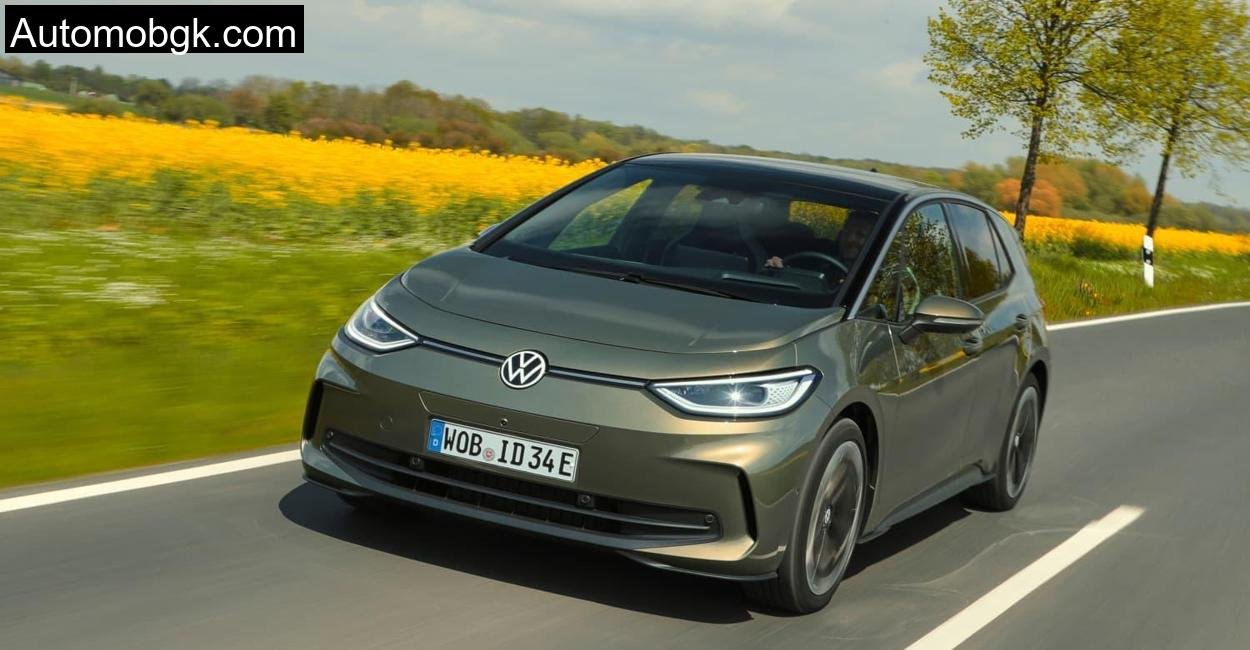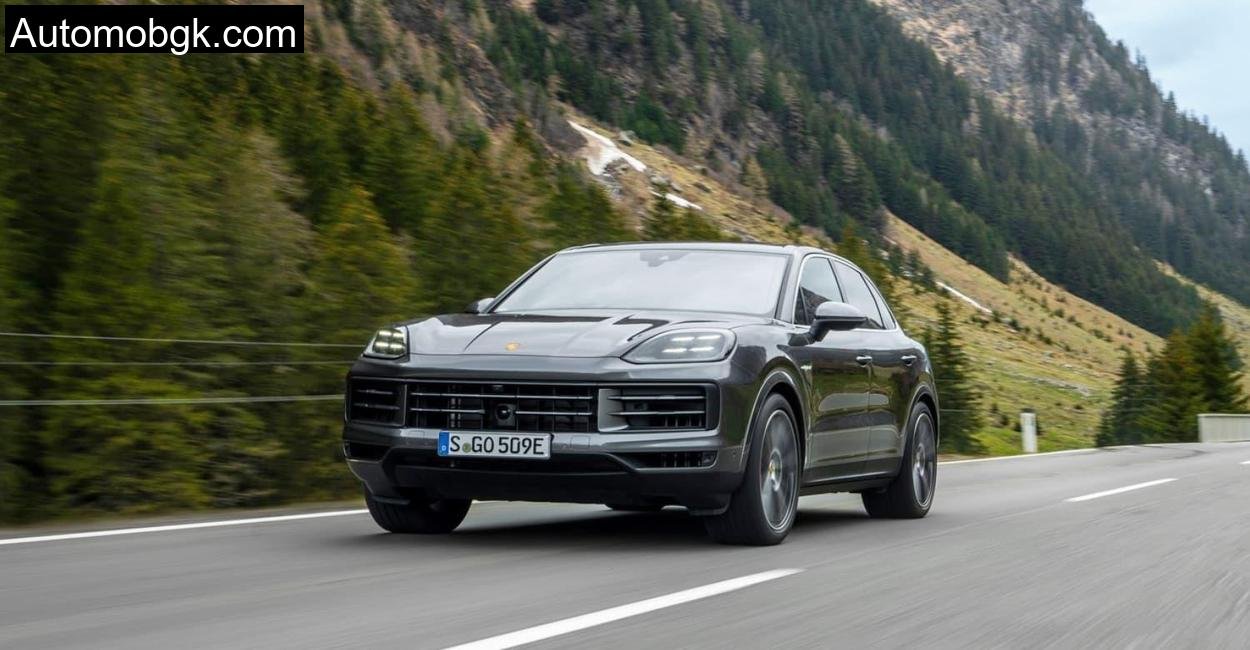But don’t expect this to be a glamorized brochure. This is a story of grit, G-forces, and one of the most analog-driving experiences left in an increasingly digital world. The Burgberg, with its mix of fast sweepers, tight hairpins, and elevation changes, became our proving ground.
Porsche 911 Model Versions
Before jumping into the drive, a brief orientation. The 911 family is vast: Carrera, Targa, Turbo, GTS, Cabriolet, Speedster, GT3 RS, you name it. Each model has its flavor. From the purist’s Carrera T with a six-speed manual to the brutal force of a Turbo S, there’s a 911 for every level of insanity.
Our test subject: the 911 Carrera S Coupé (992 series), the eighth generation. It sits right in the sweet spot, rear-engined, rear-wheel drive, with 450 horsepower and a level of refinement that’s genuinely surprising in a car this fast. It’s not the rawest, nor the most luxurious. But it might just be the most balanced.
The Cockpit is Becoming Increasingly Digital
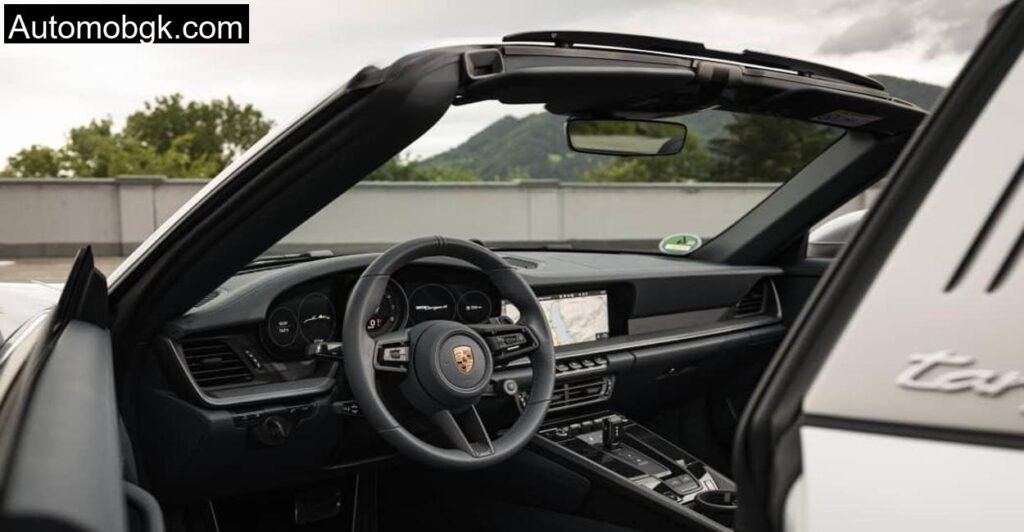
Climbing inside, the 911 still feels special. The seating position is low, the view over the curved front fenders is pure heritage. But look closer, and tradition meets touchscreen.
The centerpiece is a 10.9-inch infotainment system flanked by a mix of analog and digital displays. In the model we tested (pre-facelift), Porsche had kept some of the old-school charm, five dial instruments with the central tachometer still dominating the driver’s field of view. Post-facelift, that analog tach is gone, replaced by a fully digital 12.6-inch curved cluster.
And then there’s the starter. A rotary knob on the left of the steering wheel. It’s quaint, but Porsche is phasing it out in favor of a push-button. Call us sentimental, but twisting that little knob felt like an event, not just a process.
911 Carrera S in the Test
What better way to evaluate a sports car than through the lens of Germany’s most rigorous testing organization. Their grading system doesn’t just look at horsepower or lap times. It evaluates balance, comfort, emissions, and driving joy.
And the Carrera S? It earned straight A’s in all areas that matter to enthusiasts. 0.7 for driving performance. 1.1 for handling. 0.9 for braking. These are not arbitrary numbers, they’re a reflection of thousands of data points and hours on closed circuits.
But numbers only tell half the story. The rest unfolded on the Burgberg’s tarmac.
Top Marks for a Sports Car
We launched from a sleepy Bavarian village, the exhaust popping gently in Sport mode. The first corner came fast, a tight right-hander rising into a blind crest. Flick the steering, and the 911 responds like it’s hardwired to your thoughts. Mid-corner bumps? The adaptive dampers just soak them up.
By the third corner, we weren’t driving the 911, we were wearing it.
There’s a symphony playing under the rear decklid: a 3.0-liter twin-turbo flat-six. It doesn’t shout like a Ferrari V8, but the tone is mechanical, deep, guttural. With 530 Nm on tap, the Carrera S doesn’t need to scream to be fast. It’s already gone.
And that’s when you realize, this isn’t just a sports car. It’s a scalpel.
Overtaking Pleasure with 450 hp
Out on a longer stretch of the Burgberg, a lumbering camper van appears ahead. We drop a gear via the lightning-quick PDK, toe into the throttle, and the 911 lunges. The entire maneuver, from mirror-check to completion, takes barely two seconds. The speed builds so quickly and so seamlessly, it’s more teleportation than acceleration.
We clocked 0–100 km/h in 3.7 seconds, as claimed. But the real magic happens in the 40 to 140 km/h range, where overtakes are over before the other driver notices. And at 308 km/h top speed, well, Autobahn bragging rights are sorted.
Small Weaknesses of the Targa
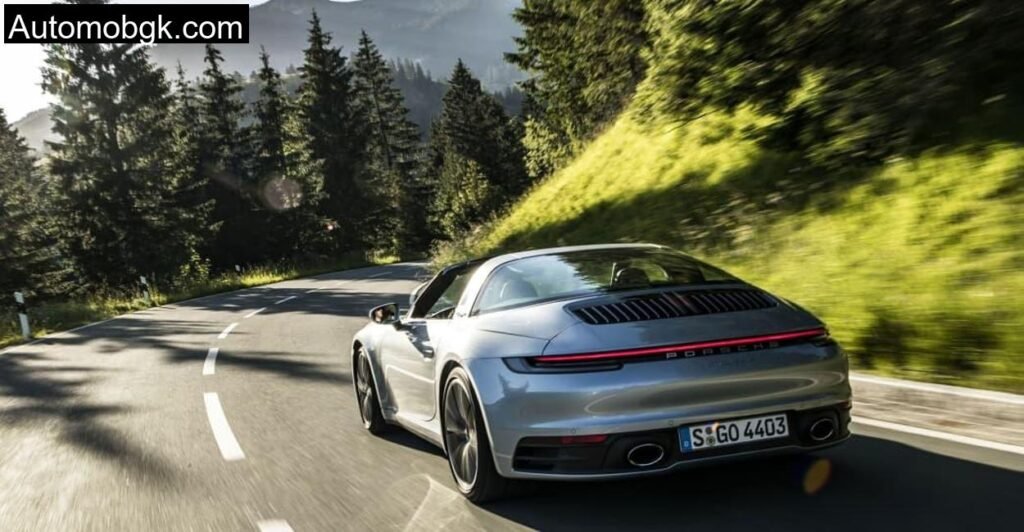
While we didn’t have a Targa on hand, it’s worth noting that its charm comes with a few caveats. The partially open roof offers a unique aesthetic and driving sensation, but highway-speed rattles and the inability to operate the roof on the move are drawbacks. The wind deflector helps, but it’s a workaround.
Still, if style matters as much as speed, the Targa delivers in spades, just know its limitations.
Facelift for Model Year 2025
The 2025 update brings both subtle tweaks and big news. Design-wise, Porsche has massaged the front and rear fascias, introduced new HD matrix lights, and added wheel options. Inside, it’s all digital now, no more analog tach, and the starter switch is gone.
More importantly, the base Carrera now borrows the GTS’s turbochargers, bumping output to 394 hp and shaving 0.1s off the 0–100 time.
But the GTS steals the show with its new T-Hybrid system: a 3.6-liter flat-six paired with electric motors for a system output of 541 hp. It rockets to 100 km/h in 3.0 seconds. Electrification is no longer a compromise, it’s an advantage.
Technical Specification
| Model | Porsche 911 Carrera S Coupé (Pre-Facelift) |
| Engine | 3.0L Twin-Turbo Flat-Six |
| Power Output | 331 kW / 450 hp |
| Torque | 530 Nm |
| Transmission | 8-speed PDK |
| 0–100 km/h | 3.7 seconds |
| Top Speed | 308 km/h |
| Fuel Consumption (Test) | 10.0 L/100 km |
| Emissions | 275 g CO₂/km (Super Plus) |
| Curb Weight | ~1,505 kg |
| Drivetrain | Rear-wheel drive |
Conclusion
Driving the Porsche 911 Carrera S in the Burgberg was less about lap times and more about sensation. Every throttle press, every corner exit, every downshift—feels precise, engineered, deliberate. Yes, it’s fast. Yes, it’s digitalizing. But it hasn’t lost its soul.
The 911 doesn’t try to be everything to everyone. It simply excels at being what it is: a pure, iconic, rear-engined sports car that continues to evolve without forgetting where it came from. And in the Carrera S, you have perhaps the most complete expression of that legacy, useable, thrilling, and utterly addictive.
Is the Porsche 911 Carrera S comfortable for daily driving?
Yes, surprisingly so. Thanks to adaptive dampers, refined PDK gearbox, and a quiet cabin, it’s usable even in urban traffic or long highway drives.
How fuel efficient is the Porsche 911 Carrera S?
In our test, we recorded around 10 L/100 km. Not exactly green, but not terrible considering the performance on tap. City driving was thirstier, highway driving more manageable.
Can the Porsche 911 be driven year-round?
Absolutely. With proper winter tires and perhaps the AWD variant, the 911 is as capable in snow as it is on a summer B-road. It’s more versatile than its image suggests.
